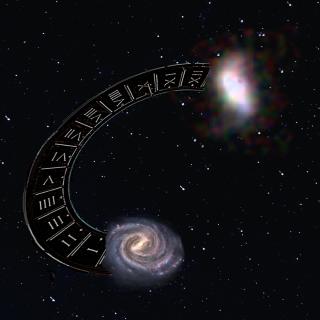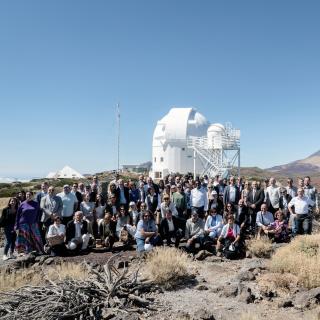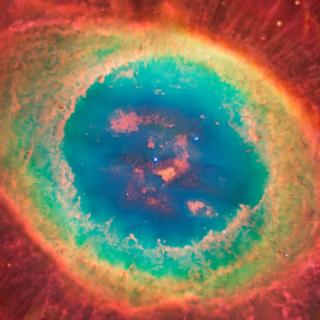Flashes produced by the impact of small cometary fragments on the surface of the Moon have been detected for the first time ever by scientists at the Astrophysics Institute of Andalusia (IAA-CSIC) and the Astrophysics Institute of the Canaries (IAC), in collaboration with investigators at the University of Monterrey and the Hispano-German Astronomical Centre of Calar Alto (CAHA) in Almeria (Spain). According to the scientists, these fragments - from the Leonid meteoroidal stream associated with Comet Tempel-Tuttle - have produced craters up to 30 metres in diameter. The conclusions of the observations, carried out in November 1999, are to appear in tomorrow's issue of the journal Nature and open up new avenues in the study of this violent phenomenon.
BETACAM ANIMATION SEQUENCES IN 3D AND INTERVIEWS WITH ONE OF THE RESEARCHERS INVOLVED (TELEPHONE: +34 922 605 206 AND +34 922 605 371)
For the first time ever, flashes due to the impact of small cometary fragments (from Comet Temple-Tuttle, with which the Leonid meteor shower is associated) on the surface of the Moon have been observed. These fragments (called meteroids) impacted violently against the lunar soil at a speed of 259 000 kilometres per hour and (according to estimates made in the study) caused craters of between 5 and 30 metres in diameter that are not visible from the Earth even with the aid of the largest telescopes. Although the surface of the Moon is peppered with craters, all produced by meteoritic, asteroidal and cometary impacts, no such impact had ever been observed before.
Such a phenomenon, in the view of the investigators involved, cannot possibly occur on Earth because the atmosphere of our planet causes the fragments to slow down and disintegrate before they reach the ground. According to the calculation made in the article ("Optical detection of meteroidal impacts on the Moon''), to appear in tomorrow's issue of Nature, the fragments weighed from 100 grammes to 5 kilogrammes. The mass of the largest of the meteoroids suggests the amount of energy liberated to be equivalent to about 3000 kilogrammes of TNT.
The flashes correspond to a meteroid stream impacting over an area of the dark part of the visible face of the Moon in November 1999. The researchers present indications of another impact of similar characteristics that occurred last July. The technique used has enabled the impact process to be better understood (this kind of impact cannot be reproduced in the laboratory), as well as the intrinsic properties of the fragments from Comet Tempel-Tuttle. The observations were carried out in Mexico on a telescope equipped with a video camera.
This is the first time that such flashes, which last less than two-hundredths of a second, have been observed owing to the low sensitivity of the cameras used. But the intensity of the Leonids in 1999, due to a higher than usual concentration of particles in space, provided a rare opportunity for observing the five flashes detected.
RESEARCHERS
- Jose Luis Ortiz, Astrophysics Institute of Andalusia (IAA) and National Research Council (CSIC), Granada, Spain
- Pedro V. Sada, University of Monterrey, Mexico
- Luis R. Bellot, Astrophysics Institute of the Canaries (IAC), Tenerife, Spain
- Francisco J. Aceituno, Alhamar 40, Granada, Spain
- Pedro J. Gutierrez, Astrophysics Institute of Andalusia (IAA) and CSIC
- U. Thiel, Hispano-German Astronomical Centre, Almeria, Spain


